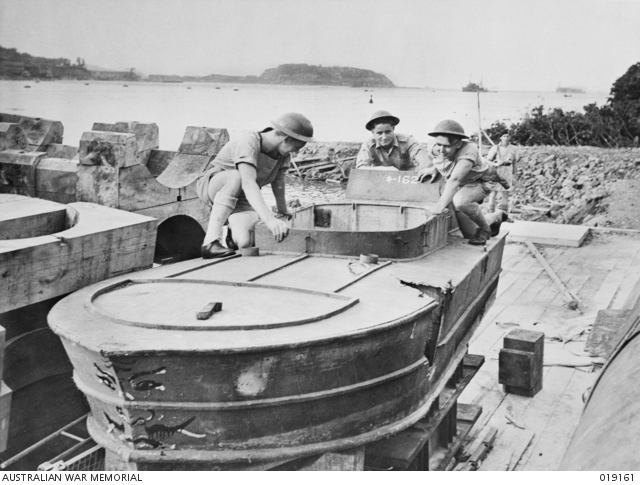Shinyo suicide launch
The Shinyo ('Ocean Shaker' or "Sea Quaker) is a one-man suicide launch produced by the Imperial Japanese Navy to counteract Allied shipping and amphibious landing forces.
Built in 1944 this plywood hulled vessel has a total displacement 1.35 tonnes.
A 85-horsepower, 6-cylinder Chevrolet engine gave it a 20 knot speed and a 3½ hour range at full speed.
The Japanese suicide launch in the Memorial collection is believed to be one of only two extant examples of a complete Shinyo.
This launch was recovered by HMAS Deloraine at Sandakan Harbour, British North Borneo, in October 1945. It was one of six that were discovered in an immediate state of operational readiness complete with petrol. An opportunity of using this type of craft in the area was never presented. A further eighteen similar craft were found in different states of repair.
This launch was used by sailors from HMAS Deloraine as a ski boat on Sandakan Harbour. It returned to Australia with the Deloraine in late 1945 and was presented to the Australian War Memorial.
Construction of these boats began in 1943. The boats were designed to be one man suicide craft armed with a 300kg charge of TNT. By the end of the war about 6,000 had been produced, most of them built of wood but a few built from steel. Most of these boats were deployed around the Philippine Islands and the Japanese Home Islands and hidden until they could be of use. Because of their green colour, they were referred to as 'frogs' by Japanese troops. The launch when transferred to HMAS Deloraine was painted to conform to the ship's colour scheme, but the correct colours should be a dark olive green with red below the waterline.
Shinyo Suicide Launch
Towards the end of World War Two, Japan built and mobilised thousands of killer boats to defend its homeland and occupied territories from possible Allied invasion. In Episode 18 of Collected, Louise Maher discovers how one of these Shinyo suicide launches was captured by Australian troops in Borneo and used for joyrides after the war before finding a permanent home at the War Memorial.

